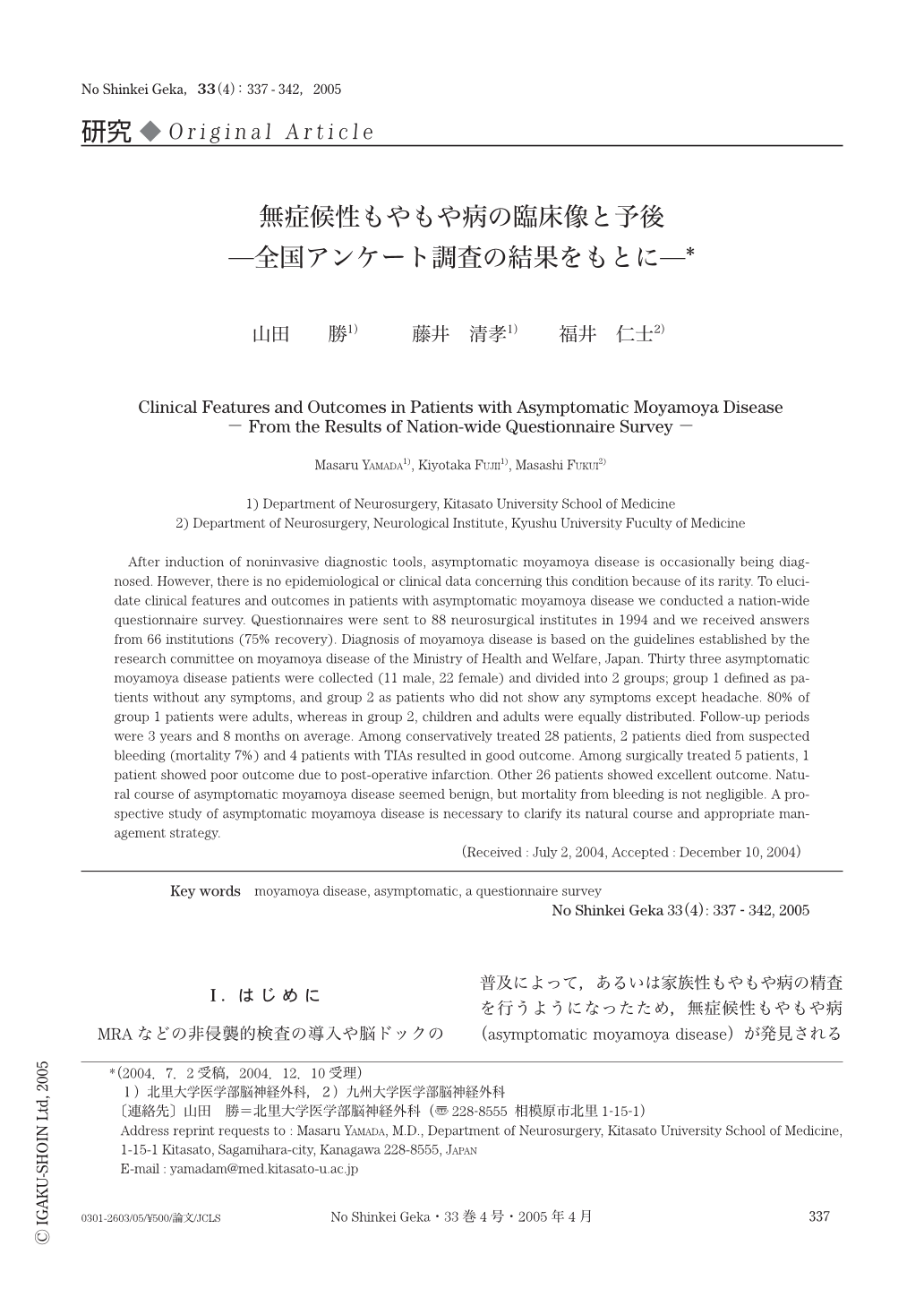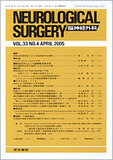Japanese
English
- 有料閲覧
- Abstract 文献概要
- 1ページ目 Look Inside
- 参考文献 Reference
Ⅰ.はじめに
MRAなどの非侵襲的検査の導入や脳ドックの普及によって,あるいは家族性もやもや病の精査を行うようになったため,無症候性もやもや病(asymptomatic moyamoya disease)が発見されるようになってきた.しかし,無症候性もやもや病のくわしい疫学調査の報告はなく自然歴は不明であり,その治療法についてもコンセンサスはない.無症候性もやもや病の全国的な実態アンケート調査の結果をもとに,無症候性もやもや病の臨床像と予後を解析して,あわせてその適切な対応を考察した.
After induction of noninvasive diagnostic tools,asymptomatic moyamoya disease is occasionally being diagnosed. However,there is no epidemiological or clinical data concerning this condition because of its rarity. To elucidate clinical features and outcomes in patients with asymptomatic moyamoya disease we conducted a nation-wide questionnaire survey. Questionnaires were sent to 88 neurosurgical institutes in 1994 and we received answers from 66 institutions (75% recovery). Diagnosis of moyamoya disease is based on the guidelines established by the research committee on moyamoya disease of the Ministry of Health and Welfare,Japan. Thirty three asymptomatic moyamoya disease patients were collected (11 male,22 female) and divided into 2 groups; group 1 defined as patients without any symptoms,and group 2 as patients who did not show any symptoms except headache. 80% of group 1 patients were adults,whereas in group 2,children and adults were equally distributed. Follow-up periods were 3 years and 8 months on average. Among conservatively treated 28 patients,2 patients died from suspected bleeding (mortality 7%) and 4 patients with TIAs resulted in good outcome. Among surgically treated 5 patients,1 patient showed poor outcome due to post-operative infarction. Other 26 patients showed excellent outcome. Natural course of asymptomatic moyamoya disease seemed benign,but mortality from bleeding is not negligible. A prospective study of asymptomatic moyamoya disease is necessary to clarify its natural course and appropriate management strategy.

Copyright © 2005, Igaku-Shoin Ltd. All rights reserved.


